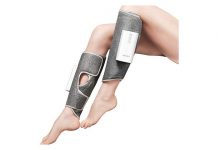Introduction
Stickers have gained wide recognition across several countries today, and they have been associated with several uses and applications. Different types of stickers are used for different purposes, but each sticker is still made similarly. Certain features define a sticker, and chief among these features is the stickers’ ability to stick. This means that a sticker can only be classified as a sticker as long as it sticks. Once a sticker loses its ability to stick firmly to surfaces, it becomes worthless as a sticker.
Stickers were mainly used for decoration purposes, but a recent trend involving customized stickers has seen marketers adopt stickers to advertise products. Today, stickers have turned into an excellent avenue for advertisements, and they are now used as product labels. Sticker availability has also increased significantly within previous years, and you can now find and acquire stickers almost effortlessly. However, you can only get the best quality stickers from trusted suppliers like jjcstickers.
Not only have stickers proven to be very useful for different tasks, but they have also shown efficiency in most of these areas. The superb finish and beautiful color blend it leaves on surfaces have attracted many users, but statistics show that most sticker users do not really understand the concept of stickers and how they work. Let us take a brief look at the history of stickers and how they originated.
History Of Stickers
A sticker is a piece of material that is glued to items and surfaces, and it was first introduced in the 1880s. The stickers were mainly made with paper materials back then, and the display was either written or painted. But they were still referred to as stickers because they could stick to surfaces, even though the grip was weak and could only last for a couple of days.
Over time, companies started to seek a more stable and uniform way of marking their brands on their products. This was triggered by the growing competitive market that featured similar products from different brands. Eventually, adhesive stickers were introduced, and this time they featured other materials like plastic, vinyl, leather, and other composite materials. These adhesive stickers were more potent and stable than the previous sticker, and they could stick on surfaces for an extended period. However, the display was still created by writing or painting, which was a significant downside because the ink often got erased while the sticker was still up.
The final phase of sticker development involved the introduction of laser printing for the display side of the stickers. This was discovered to be the perfect finish that the sticker needed, hence, the origination of modern stickers. Although several modifications have improved the display and functionality, printed stickers are still very much in use today.
Conclusion
We use stickers for many purposes every day, including item identification and surface decoration. The finishes they offer are sublime, which is why they are so popular. However, you can only get the best effects from stickers when you know how to use them correctly.



























